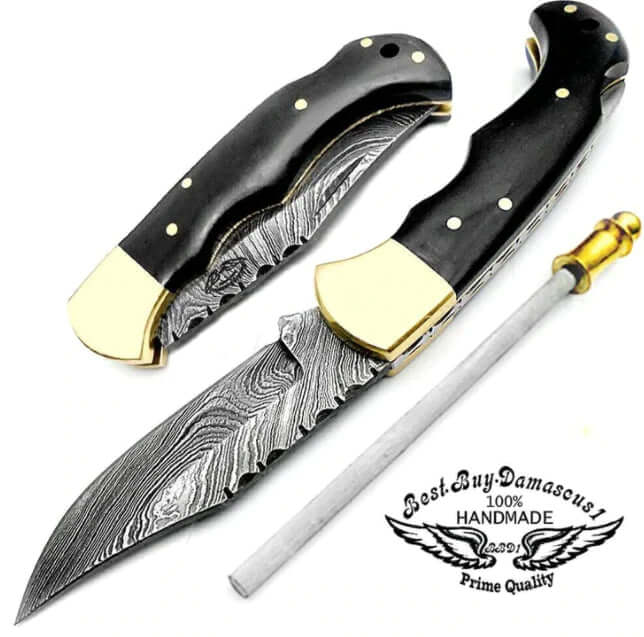
How to Choose a Hunting Knife
Posted by Best.Buy. Damascus1 on
A hunting knife is a useful and very expensive item. The choice should therefore be made carefully. Proven manufacturers guarantee the durability of the product, so it is not worth skimping on the quality.
The first thing to do is to decide what the knife is for, as it can be used for butchering carcasses, sawing firewood, or simply for hiking.
Length of Blade
A hunting knife is designed for non-standard tasks, so short models are not very functional and a too-long product is not very comfortable. The optimum length is considered to be between 100 and 120 mm, but for carcasses, a cloth length of up to 15 cm should be used. Attention should be paid to weight - it is uncomfortable to carry models that are too heavy.
Blade Material
Many advertisements call for hunting devices with a blade made of Damascus steel. This statement is true for lovers of aggressive cutting, but such metal requires care. Good steel contains a large amount of carbon.
Some novice hunters try to choose a knife with a very hard blade, but practice shows that such a knife is quite fragile. Experienced hunters, therefore, prefer a blade with a good balance of hardness and viscosity, as such knives are more versatile and easier to sharpen, which is essential in the field.
Quality Characteristics
There is a special ruler for determining the percentage of carbon in steel. Products from elite manufacturers are fitted with a special marking indicating these parameters.
Good quality steels start with a score of 60 or more on the Rockwell HRC scale. Anything below 60 is not top-quality material. Sometimes special alloying components such as chromium are added to the steel. This makes the knives more resistant to corrosion damage and makes sharpening them easier.
It's All In the Shape
A lot also depends on the shape of the knife. Experienced hunters hardly use straight knives, preferring a curved shape. Since this configuration increases the surface area, it is much easier to work with. The disadvantages are that they are not very robust.
In order to have good cutting properties, the blade is made in the shape of a thin wedge or an equilateral triangle. However, this shape does not give the product sufficient strength. In addition, it wears out quickly under heavy loads. The blades of hunting knives are therefore sharpened at a small angle (not more than 35 degrees). With this shape, the productivity of the knife increases several times. And you can cut carcasses without having to sharpen them often.
Many knife models are equipped with a small saw on the forehead, such knives work well for cutting horns. But to do the job well, they must be made of high-quality steel.
Types of Handle
Wood has always been considered the best material for knife handles. This handle is light, durable, does not slip, and can be sized to fit any hand. If the knife is a gift and will not be used for real hunting, then bone or pearl handles will be a good option. The shape is straight only. This will make it easy to cope with cutting any material. Finger recesses are not necessary at all - there is some difficulty if you have to change your hand frequently during work.
The Handles Are Also Divided Into 2 Types:
Attached - with a narrow canvas well secured in the handle. Such knives are light, but not very sturdy;
Riveted - the more robust construction allows long and intensive use. They are heavy, but that is their only drawback.
A good hunting knife does not need any additional accessories. Durability, good quality, ease of use - these qualities should be key when choosing.

